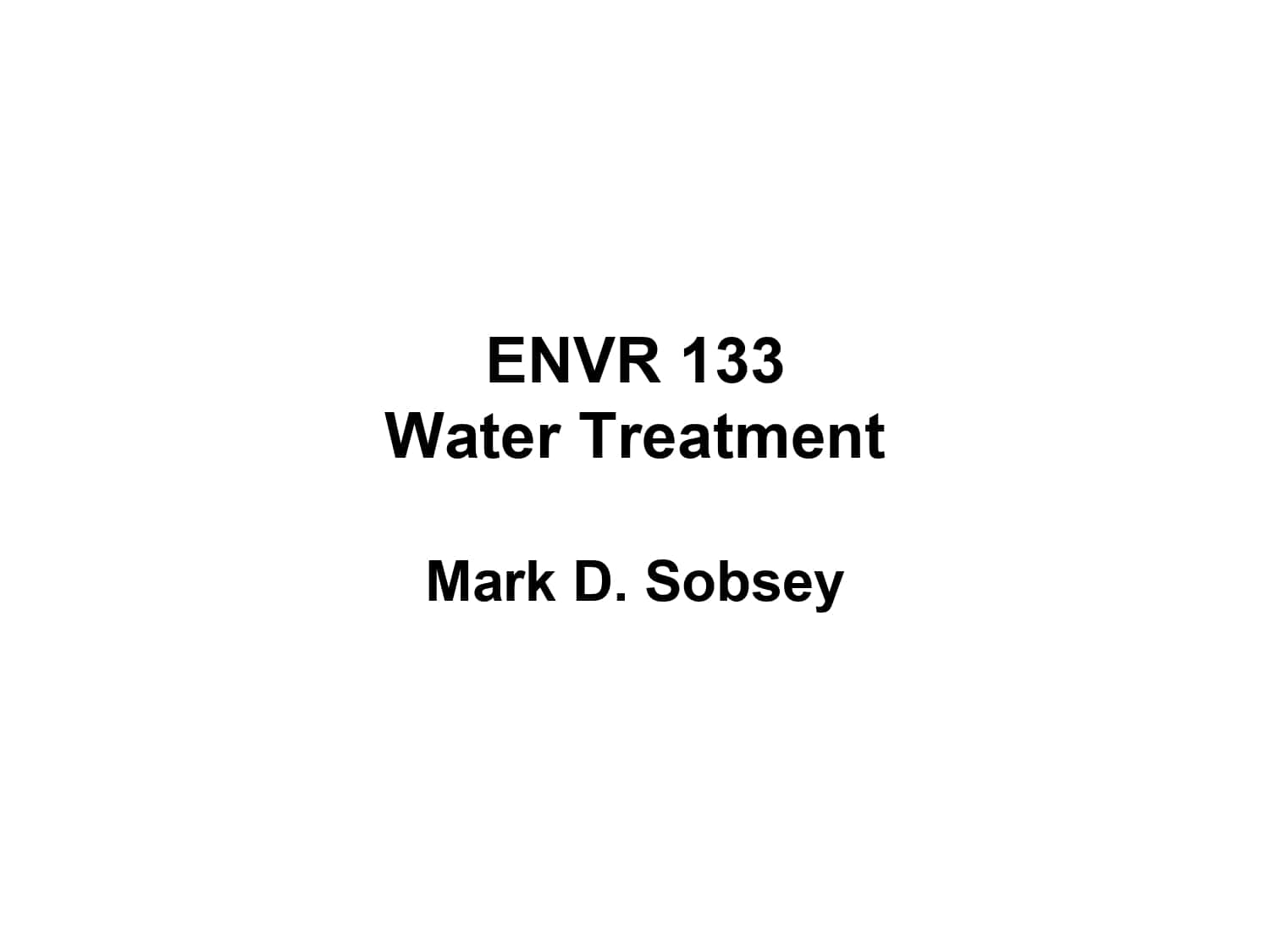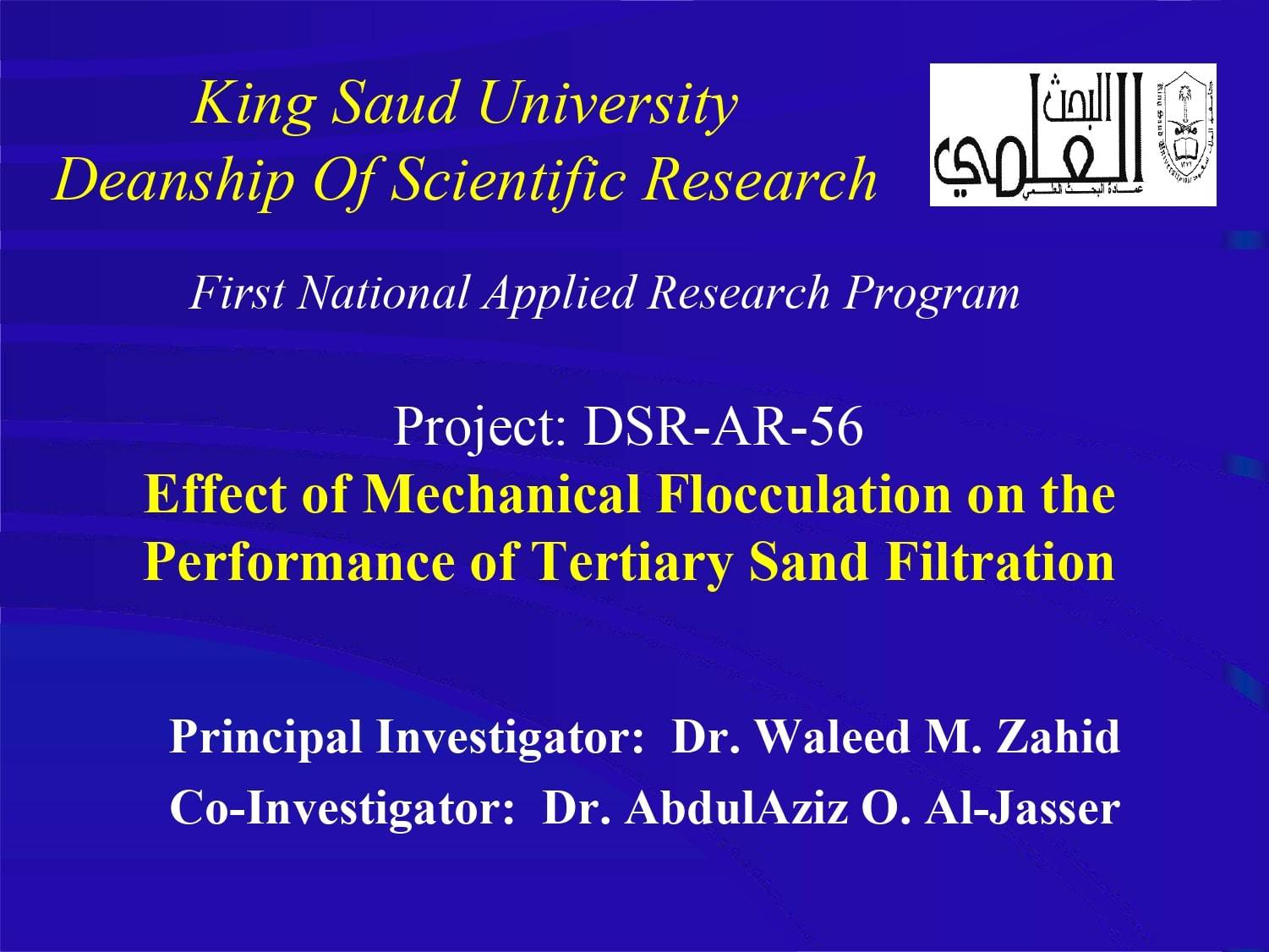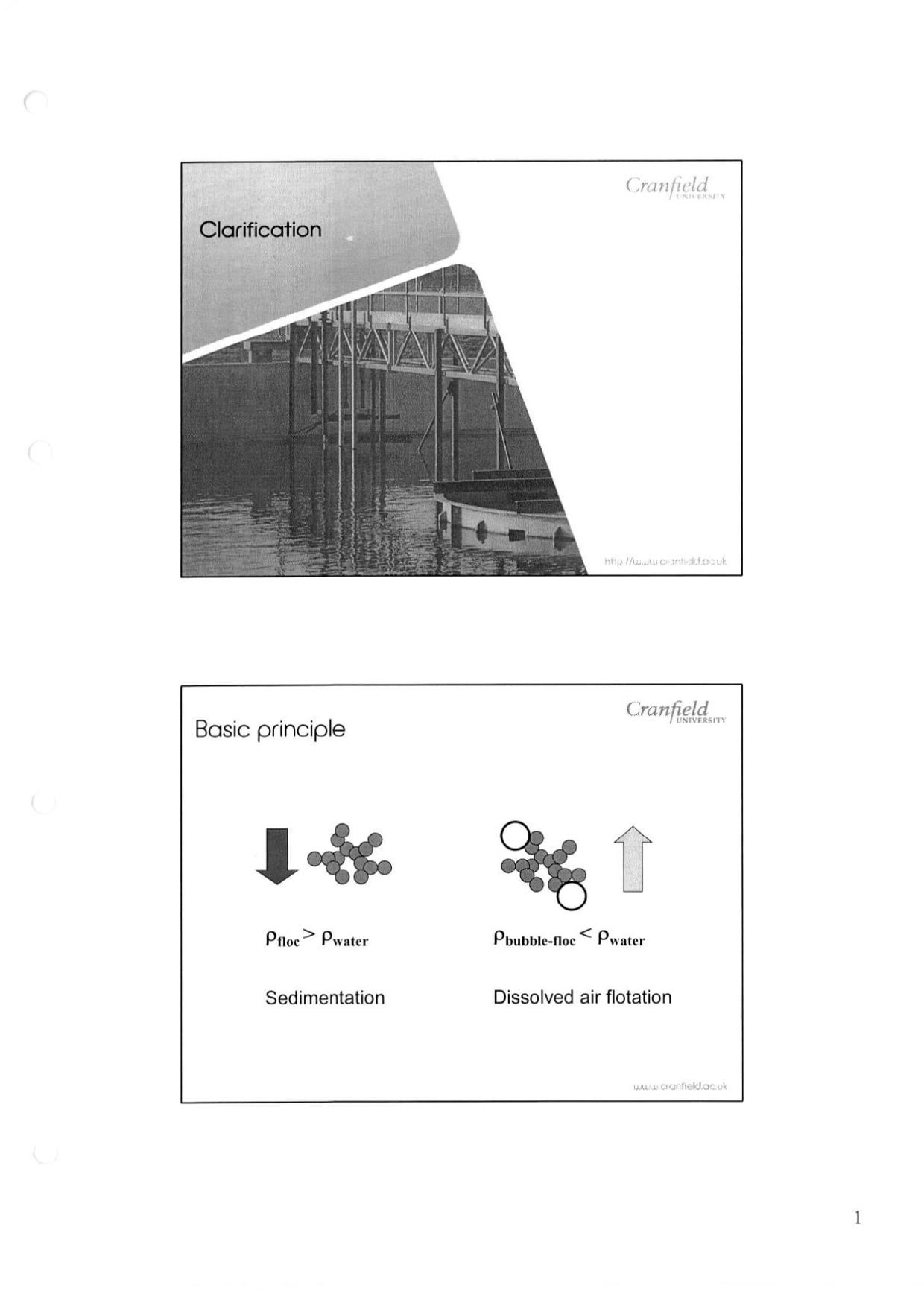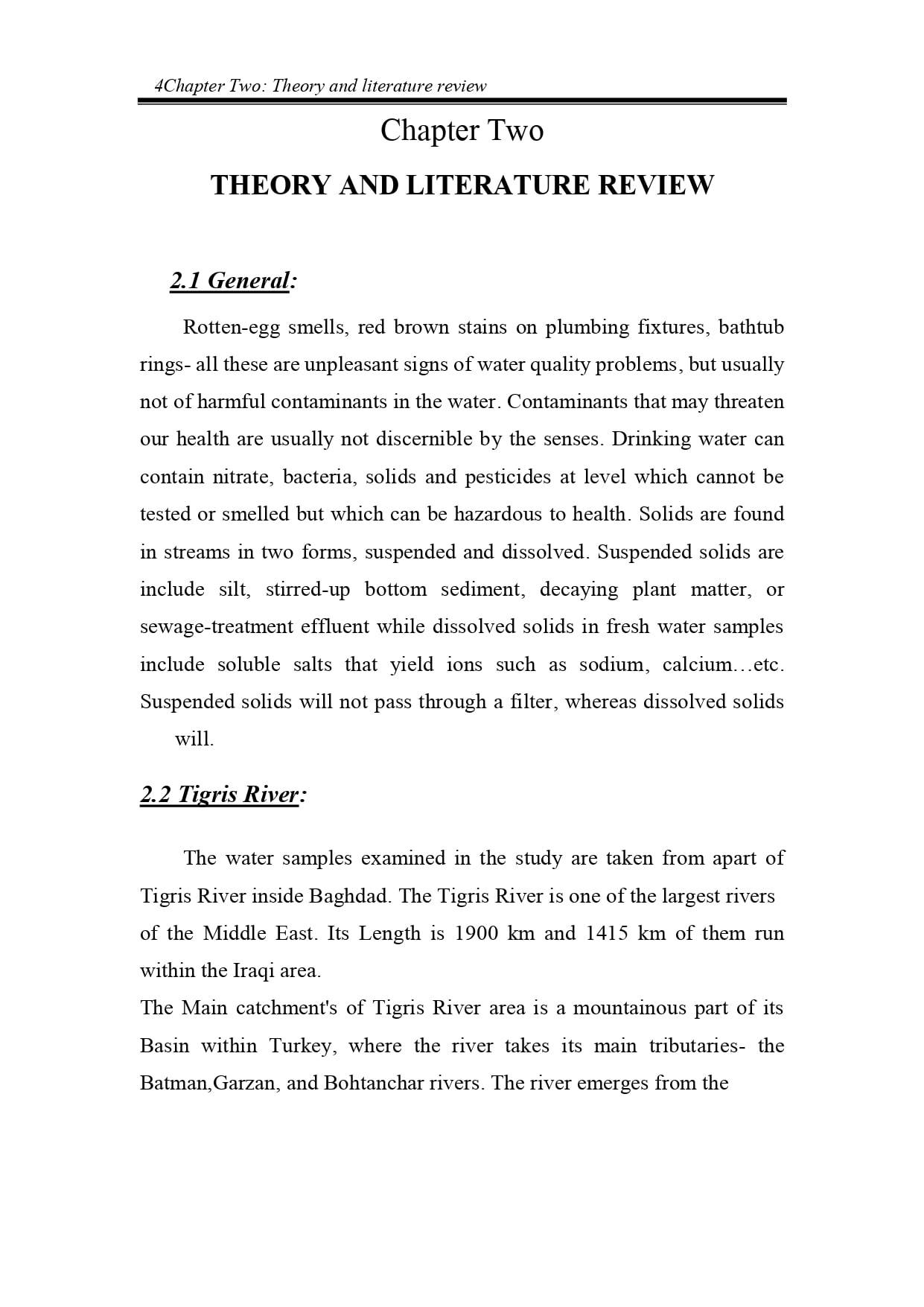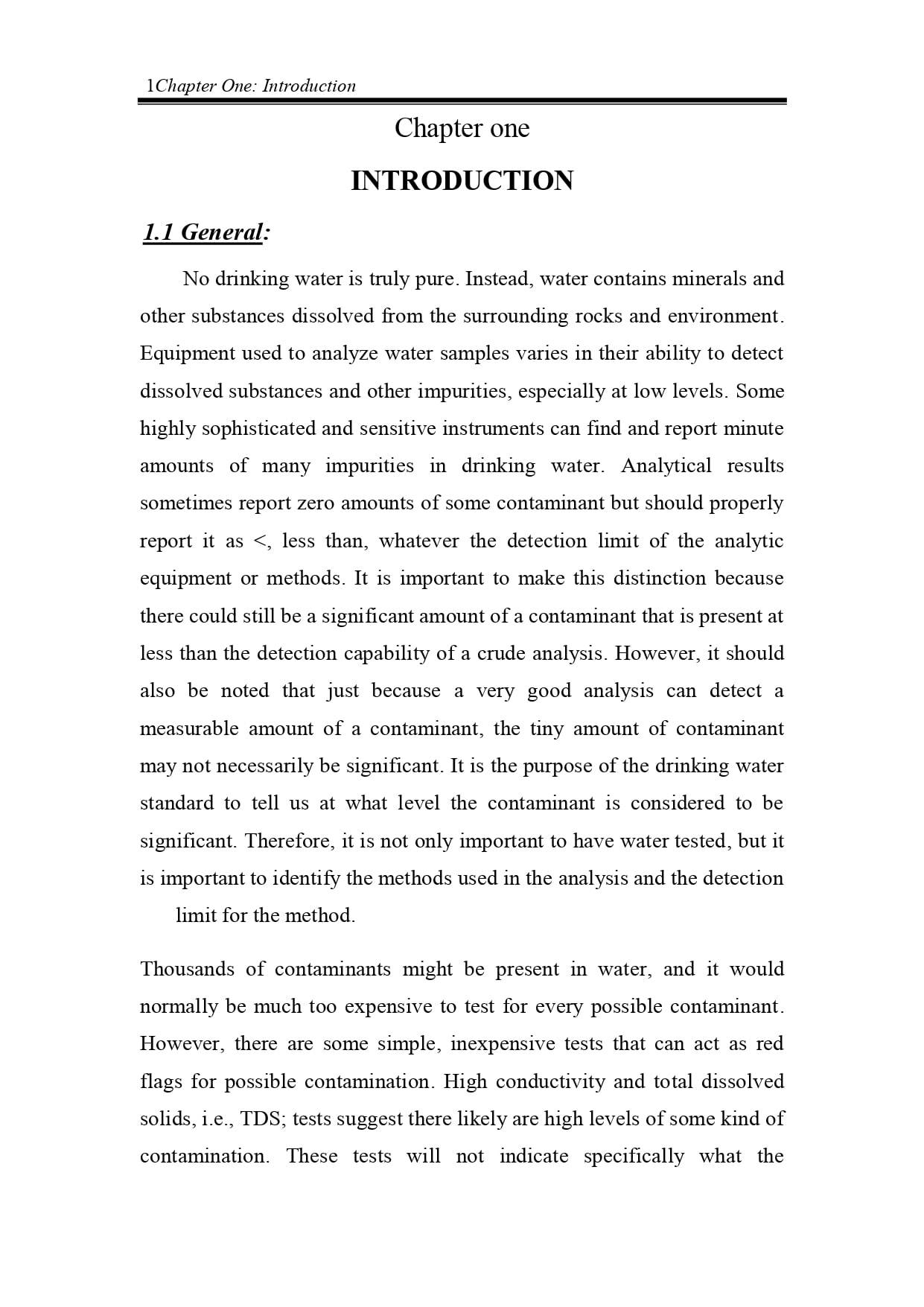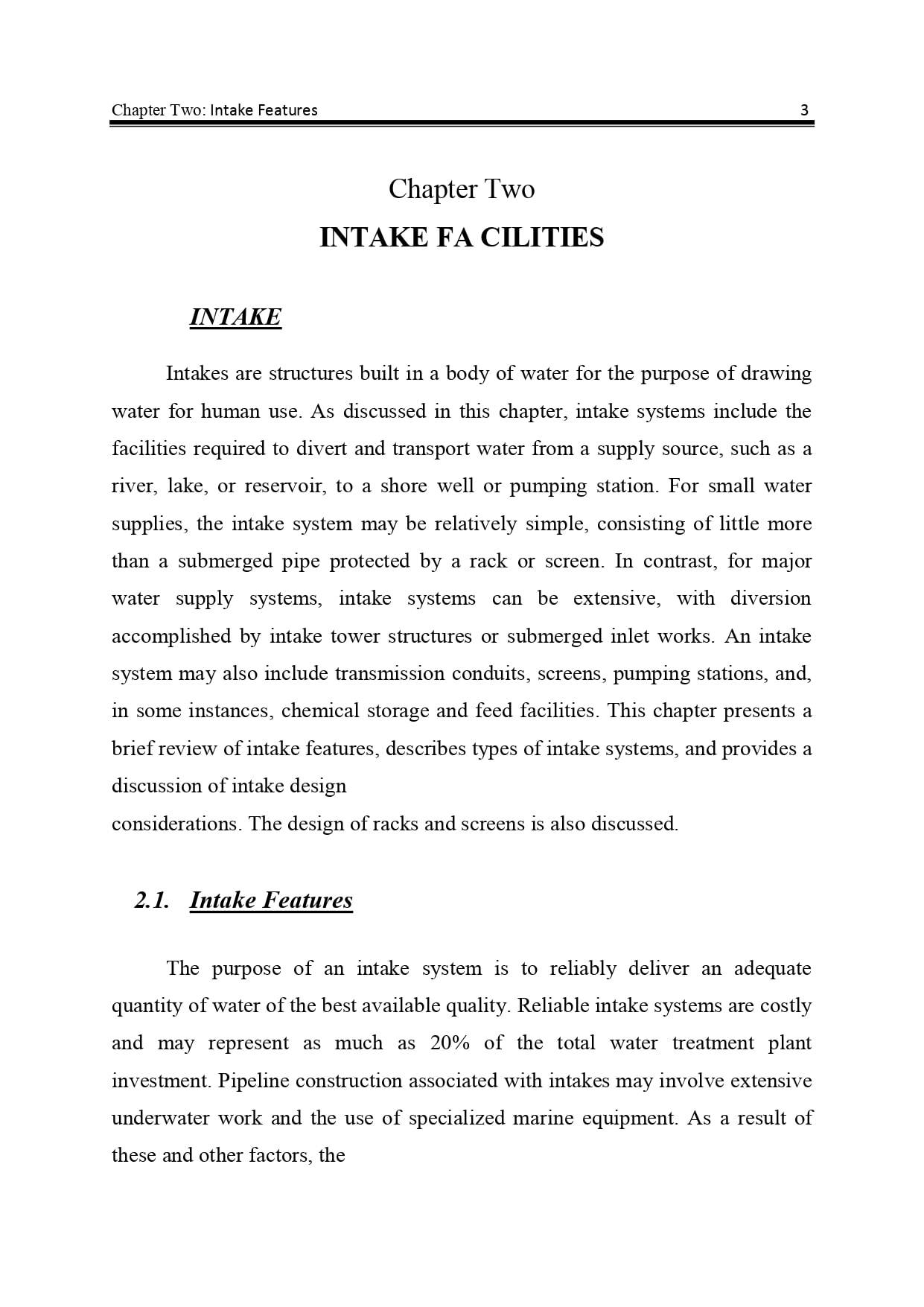ENVR 133 Water Treatment
Drinking water must be essentially free of disease-causing microbes, but often this is not the case.
ENVR 133 Water Treatment
Drinking water must be essentially free of disease-causing microbes, but often this is not the case.
Effectiveness Of Drinking Water Treatment Plant In Antibiotics Removal
Introduction
• Recent studies have determined that a variety of antibiotics are present in surface and groundwater .
• This occurs, in part, from the discharge or disposal of antibiotics from medical, municipal, and agricultural sources.
Effectiveness Of Drinking Water Treatment Plant In Antibiotics Removal
Introduction
• Recent studies have determined that a variety of antibiotics are present in surface and groundwater .
• This occurs, in part, from the discharge or disposal of antibiotics from medical, municipal, and agricultural sources.
Effect of Mechanical Flocculation on the Performance of Tertiary Sand Filtration
To investigate the influence of flocculating settled effluents from biological stage of treatment on the performance of gravity sand filtration for the removal of suspended solids and organic matter
Effect of Mechanical Flocculation on the Performance of Tertiary Sand Filtration
To investigate the influence of flocculating settled effluents from biological stage of treatment on the performance of gravity sand filtration for the removal of suspended solids and organic matter
Chemical Oxidation
Chemical oxidation technologies have been used for many years to degrade a wide range of pollutants in wastewater and drinking water.
Chemical Oxidation
Chemical oxidation technologies have been used for many years to degrade a wide range of pollutants in wastewater and drinking water.
Chapter Two Theory And Literature Review
Contaminants that may threaten our health are usually not discernible by the senses. Drinking water can contain nitrate, bacteria, solids and pesticides at level which cannot be tested or smelled but which can be hazardous to health. Solids are found in streams in two forms, suspended and dissolved.
Chapter Two Theory And Literature Review
Contaminants that may threaten our health are usually not discernible by the senses. Drinking water can contain nitrate, bacteria, solids and pesticides at level which cannot be tested or smelled but which can be hazardous to health. Solids are found in streams in two forms, suspended and dissolved.
Chapter One Introduction
No drinking water is truly pure. Instead, water contains minerals and other substances dissolved from the surrounding rocks and environment. Equipment used to analyze water samples varies in their ability to detect dissolved substances and other impurities, especially at low levels. Some highly sophisticated and sensitive instruments can find and report minute amounts of many impurities in drinking water.
Chapter One Introduction
No drinking water is truly pure. Instead, water contains minerals and other substances dissolved from the surrounding rocks and environment. Equipment used to analyze water samples varies in their ability to detect dissolved substances and other impurities, especially at low levels. Some highly sophisticated and sensitive instruments can find and report minute amounts of many impurities in drinking water.
Chapter Two Intake Facilities
Intakes are structures built in a body of water for the purpose of drawing water for human use. As discussed in this chapter, intake systems include the facilities required to divert and transport water from a supply source, such as a river, lake, or reservoir, to a shore well or pumping station. For small water supplies, the intake system may be relatively simple, consisting of little more than a submerged pipe protected by a rack or screen. In contrast, for major water supply systems, intake systems can be extensive, with diversion accomplished by intake tower structures or submerged inlet works.
Chapter Two Intake Facilities
Intakes are structures built in a body of water for the purpose of drawing water for human use. As discussed in this chapter, intake systems include the facilities required to divert and transport water from a supply source, such as a river, lake, or reservoir, to a shore well or pumping station. For small water supplies, the intake system may be relatively simple, consisting of little more than a submerged pipe protected by a rack or screen. In contrast, for major water supply systems, intake systems can be extensive, with diversion accomplished by intake tower structures or submerged inlet works.



